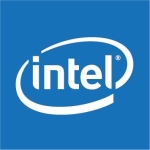By implementing Dell PowerEdge Rack Servers, we wanted everything to be in-house so that we could manage it ourselves. We essentially wanted to have it all in our hands. We did not want to outsource it.
So far, these servers have been satisfactory and very reliable. Of course, we maintain updates; that is a part of it, and we plan accordingly to restart the entire machine, etc. A lot of it is automated in-house.
They have definitely improved our organization. We have centralized everything, which is the advantage. With Dell PowerEdge Rack Servers, we essentially operate hardware and have various applications and solutions on one platform. They have had a significant impact on security, and there is also reliability. When you have peak loads, you can adjust accordingly. That is a definite advantage with such a machine.
In terms of energy consumption, I do not know what the consumption is, but the trend is towards machines consuming less. Dell probably needs to keep up with other manufacturers and reduce consumption. It is also likely a reason why many companies are trying to move away from traditional servers, or in our case, towards Azure Cloud, because they also want to save energy.
Dell PowerEdge Rack Servers have definitely helped a lot in terms of the sustainability goals. I am new to the company, but from what I have gathered, we used to have a separate machine for each application area. In other companies where I have been, we had, in some cases, up to 80 machines. With Dell PowerEdge Rack Servers, we could streamline the entire server landscape we had. They are designed for that purpose.
Dell PowerEdge Rack Servers have affected the overall flexibility of our operations. In the past, we had a separate machine for each application, but now, everything is centralized. One hardware has everything on it. We have reliability, and the VMs can be moved back and forth depending on the load.
I would rate Dell PowerEdge Rack Servers a ten out of ten. In all the companies where we used Dell, I was always satisfied. That is why the decision was made back then to move away from other manufacturers and switch to Dell. I am not a decision-maker, but if I could decide, I would still stick with the physical aspect because I prefer having the device physically with me, being able to take care of it, and seeing it, rather than it being somewhere in the cloud. I am not a decision-maker, but I would choose Dell.
Foreign Language:(German)
Höchst zuverlässige und skalierbare Server mit exzellentem Kundenservice
Wie lange nutzen Sie schon Dell PowerEdge Rack Server?
Ich nutze Dell PowerEdge Rack Server seit fünf bis sechs Jahren.
Was ist Ihr Hauptanwendungsfall für diese Lösung? (Bitte geben Sie Details zu Ihrer Umgebung an.)
Wir haben viele Anwendungsfälle. Wir haben viele virtuelle Maschinen, die wir für die Entwicklung nutzen. Wir haben eine Entwicklungsabteilung bei uns. Sie arbeiten auf den Maschinen, die wir über HPE installiert haben.
Bitte teilen Sie uns mit, wie Dell PowerEdge Rack Server Ihr Unternehmen verbessert haben. Wenn nicht, erklären Sie bitte, warum nicht.
Mit der Implementierung von Dell PowerEdge Rack-Servern wollten wir alles im Haus haben, damit wir es selbst verwalten können. Wir wollten im Grunde alles in unseren Händen halten. Wir wollten es nicht auslagern.
Bislang waren diese Server zufriedenstellend und sehr zuverlässig. Natürlich kümmern wir uns um Updates, das gehört dazu, und wir planen entsprechend, die gesamte Maschine neu zu starten usw. Vieles davon wird intern automatisiert.
Sie haben unsere Organisation definitiv verbessert. Wir haben alles zentralisiert, das ist der Vorteil. Mit den Dell PowerEdge Rack-Servern betreiben wir also im Wesentlichen Hardware und haben verschiedene Anwendungen und Lösungen auf einer Plattform. Sie haben sich erheblich auf die Sicherheit ausgewirkt, und auch die Zuverlässigkeit hat sich verbessert. Wenn Sie Spitzenlasten haben, können Sie sich entsprechend anpassen. Das ist ein klarer Vorteil bei einer solchen Maschine.
Was den Energieverbrauch angeht, so weiß ich nicht, wie hoch der Verbrauch ist, aber es geht in Richtung weniger verbrauchender Maschinen. Dell muss wahrscheinlich mit den anderen Herstellern mithalten und den Verbrauch senken. Das ist wahrscheinlich auch ein Grund, warum viele Unternehmen versuchen, von traditionellen Servern wegzukommen, oder in unserem Fall zur Azure Cloud, weil sie auch Energie sparen wollen.
Die PowerEdge Rack Server von Dell haben uns bei der Erreichung der Nachhaltigkeitsziele definitiv sehr geholfen. Ich bin neu in dem Unternehmen, aber soweit ich weiß, hatten wir früher für jeden Anwendungsbereich eine eigene Maschine. In anderen Unternehmen, in denen ich tätig war, hatten wir in einigen Fällen bis zu 80 Maschinen. Mit den PowerEdge-Rack-Servern von Dell konnten wir die gesamte Serverlandschaft rationalisieren, die wir hatten. Sie sind genau für diesen Zweck konzipiert.
Dell PowerEdge Rack Server haben sich auf die Gesamtflexibilität unseres Betriebs ausgewirkt. Früher hatten wir für jede Anwendung einen eigenen Rechner, aber jetzt ist alles zentralisiert. Alles ist auf einer Hardware untergebracht. Wir haben Zuverlässigkeit, und die VMs können je nach Auslastung hin- und hergeschoben werden.
Welche Funktionen waren für Sie am wertvollsten, und warum?
Wir schätzen die Qualität dieser Produkte. Ich habe auch mit HPE und anderen Herstellern zu tun gehabt. Was den Service angeht, ist Dell sehr optimal. Ich bin damit sehr zufrieden, ob bei diesem Unternehmen oder anderswo. Das war der Grund, warum wir bei Dell geblieben sind. Der gute Service ist ein Grund dafür.
Es gibt noch andere Aspekte der Qualität. Diese Server sind sehr zuverlässig. Wir hatten kaum Ausfälle. Ein Festplattenwechsel ist Routine, je nachdem, was eingebaut ist, aber ansonsten war die Qualität hervorragend.
In welchen Bereichen könnten die Dell PowerEdge Rack Server verbessert werden?
Im Allgemeinen ist es unser langfristiges Ziel, alles in Azure zu haben. Wir arbeiten auch mit Office 365, und wir wollen im Prinzip alles an einem Ort haben. Vor allem muss die Hardware, die wir vor Ort haben, nicht mehr gewartet werden, weil das Zeit und Geld kostet. Wir wollen uns von diesem Aspekt einfach verabschieden. Ich bin kein Entscheidungsträger, aber wenn es nach mir ginge, würde ich diese Server wahrscheinlich lieber haben als irgendwo in der Cloud.
Sie können in Betracht ziehen, sie in ihrer physischen Größe zu verkleinern, aber die gleiche Qualität und die gleiche Sicherheit beizubehalten. Das kann eine Option sein. Sie brauchen nicht unbedingt einen so großen Schrank. Das wäre eine interessante Option.
Haben Sie zuvor eine andere Lösung genutzt und wenn ja, warum haben Sie gewechselt?
In meinem derzeitigen Unternehmen habe ich keine anderen Server verwendet. Ich bin neu hier, aber wir haben immer Dell verwendet. In meinem vorherigen Unternehmen haben wir viel mit HPE gearbeitet, aber aufgrund von Problemen mit der Qualität und dem Service haben wir diese Firma verlassen. Leider war HPE in Bezug auf den Service nicht so gut. Also sind wir zu Dell gewechselt. Der Service war ein wichtiger Grund für diesen Wechsel.
Haben Sie vor Ihrer Entscheidung andere Lösungen bewertet? Wenn ja, welche?
Wir haben keine anderen Lösungen bewertet.
Was würden Sie hinsichtlich der Einrichtungskosten, der Preise und/oder der Lizenzierung empfehlen?
Die Lizenzierung richtet sich nach den Maschinen, die Sie haben. Sie ist ein Teil des Prozesses. Ich bin mit den Preisen nicht vertraut, aber aus der Sicht eines Unternehmens ist es besser, je kosteneffizienter es ist, insbesondere bei der Verwaltung einer großen Infrastruktur.
Was halten Sie von der Skalierbarkeit dieser Lösung?
Was die Skalierbarkeit angeht, würde ich sie mit zehn von zehn Punkten bewerten.
Was halten Sie von der Stabilität dieser Lösung?
Diese Server sind stabil. Ihre Zuverlässigkeit ist genau richtig.
Wie war die Ersteinrichtung, einfach oder komplex und in welcher Hinsicht?
Ich war an der Ersteinrichtung nicht beteiligt.
Wie sind Ihre Erfahrungen mit dem Kundendienst und dem Support?
Ich bin sehr zufrieden mit dem Support. Ich bin beeindruckt. Er ist großartig. Die Hilfe ist schnell, und die Techniker sind sofort erreichbar. Das hängt natürlich von dem Vertrag ab, den Sie haben. Wir erhalten sofortige Unterstützung. Das ist erstklassig. Das soll so bleiben.
Wie würden Sie diese Lösung auf einer Skala von 1-10 für Service und Support bewerten?
10
Wie bewerten Sie die Dell PowerEdge Rack Server auf einer Skala von 1-10 (1=schlechteste, 10=beste)? Bitte geben Sie Details an.
Ich würde Dell PowerEdge Rack Server mit zehn von zehn Punkten bewerten. In allen Unternehmen, in denen wir Dell im Einsatz hatten, war ich immer zufrieden. Deshalb wurde damals die Entscheidung getroffen, die anderen Hersteller zu verlassen und zu Dell zu wechseln. Ich bin kein Entscheidungsträger, aber wenn ich mich entscheiden könnte, würde ich immer noch bei dem physischen Aspekt bleiben, weil ich es vorziehe, das Gerät physisch bei mir zu haben, mich darum kümmern zu können und es zu sehen, anstatt es irgendwo in der Cloud zu haben. Ich bin kein Entscheidungsträger, aber ich würde mich für Dell entscheiden.












